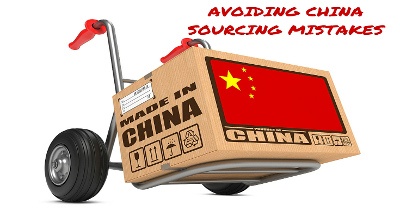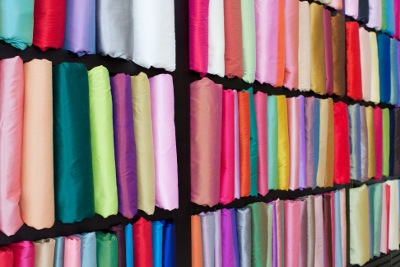 Have you ever paid the deposit for an order only to find out later that you wished you’d dealt with a different supplier from the start? Have multiple misunderstandings between you and your supplier contact led to production delays or quality problems? If so, you’re not alone.
Have you ever paid the deposit for an order only to find out later that you wished you’d dealt with a different supplier from the start? Have multiple misunderstandings between you and your supplier contact led to production delays or quality problems? If so, you’re not alone.
Plenty of importers report frustrations with sourcing products from China. But many of these frustrations are avoidable. And despite these hazards, successful sourcing from China is entirely possible. In fact, it can be an easy process so long as you avoid some common China sourcing mistakes importers are known to make.
By avoiding these mistakes, you can also avoid the nasty headaches that come with trying to solve the problems they cause.
1. Paying before verifying the supplier
Paying before actually seeing what the supplier is capable of producing tops the list of China sourcing mistakes. You might search popular websites like Alibaba or Made-in-China for neon signs. But just because you come across a supplier that claims they can make neon signs at the quality and quantity you want doesn’t necessarily mean they can. It’s wise to rely on more than just the word of the salesperson you’re dealing with.
Requesting and approving a product sample
One of the best ways you can verify the product before you place an order is to request a product sample. A product sample is sometimes called a “golden sample” because it represents the best product a supplier is capable of delivering. Let’s say you ask for a sample neon sign, for example, and the supplier sends you one that’s defective or substandard. Now you can nip the problem in the bud by having the supplier send you a revised sample or by finding another  supplier entirely.
supplier entirely.
If you don’t request a sample, you’re working under the assumption that the supplier knows exactly what you want. This is risky because it denies you the opportunity to clarify any expectations regarding the product prior to mass production. And it’s much less expensive to find and fix issues before they affect a larger quantity of your order (related: What’s the Cost to Ship a Product Sample?).
Receiving and approving a product sample does have some limitations. Perhaps the most obvious one is the difficulty of verifying where the sample actually came from. How can you be sure that the supplier that sent you the sample didn’t just buy it from another supplier that won’t be your manufacturer?
Auditing the supplier before ordering
The best way to know who will actually be manufacturing your product is to carry out an audit. This doesn’t necessarily mean hiring a third-party auditing company to audit a factory for you. You can also travel personally to China to visit a factory and meet with supplier staff. In fact, paying a visit is a great way to strengthen the relationship you have with your supplier (related: 5 Mistakes to Avoid When Visiting a Chinese Factory).
But if cost or comfort are an issue for you, hiring a qualified third-party auditor to verify a supplier on your behalf is often a better alternative. The most common supplier audit to conduct during sourcing is an audit following the ISO 9001 standard. This type of audit looks at a factory’s quality management systems to help you answer the important questions, including:
- How large is the facility?
- Does the factory have standard documentation, such as a business license, export license, etc.?
- What’s the extent of the factory’s internal quality control department?
- Does the factory conduct lab testing on-site?
- How many R&D staff does the factory employ full time?
Auditing a factory before paying a heavy deposit for an order is an important step for working with a supplier for the first time. Without the transparency and foresight that supplier verification provides, many less experienced importers find themselves beholden to a supplier that isn’t meeting their expectations. And as we saw in late 2015 with the Tianjin explosions, an audit can also prevent a disaster and save lives.
"#Supplier verification helps ensure that your goods are up to par with your expectations."2. Falsely believing the supplier fully understands you
Communication can be a major barrier you encounter when importing from a different country. And falsely believing a supplier fully understands you is one of the most common China sourcing mistakes importer make. Thankfully, there are many more English-speaking staff in Chinese factories today than there were five or ten years ago. Even so, heaps of importers still receive products that don’t conform to their requirements. Why is this so?
Lacking clarity with product specifications and requirements
One of the main reasons importers can be misunderstood by a supplier, or prospective supplier, is that they don’t provide clear expectations for a product upfront. Some importers think it’s enough to s end the supplier a detailed drawing showing product dimensions and other aspects of design and expect the factory to figure out the rest. But as you may have encountered in your own experience, this is a recipe for disaster.
end the supplier a detailed drawing showing product dimensions and other aspects of design and expect the factory to figure out the rest. But as you may have encountered in your own experience, this is a recipe for disaster.
There’s so much more information that a supplier should have other than product requirements, such as:
- Clarification for which defects are acceptable or unacceptable and in what quantity
- Expectations for product inspection
- Requirements for sending and approving a product sample
- Shipping date; and
- Warranty and/or return expectations
There are two key documents that can go a long way in conveying this information: a QC checklist and a comprehensive purchase order (PO).
QC checklists
Creating and sending the supplier a detailed QC checklist is a great way to convey your requirements and get feedback on what the supplier is capable of delivering. This kind of document usually describes known quality defects and other issues, often with photos. It also lets the supplier know what issues you can accept in the order and what you may ask the supplier to replace or rework (related: How to Create a QC Checklist).
Purchase orders
There’s no better opportunity to set expectations early than by including them directly on the PO you issue to a supplier. An effective PO attempts to answer as many questions about requirements as possible so the supplier can respond to them before you pay the deposit for the order. Then, if the supplier fails to meet any of your requirements later in the process, you can point to the PO as the prior agreement (related: The Essentials of a Solid Purchase Order).
"An effective #PO clearly establishes requirements for your #supplier"Requirements lost in translation
Have you ever sent a long, complicated document or email to your supplier contact and found that they didn’t seem to read or understand it? One of the most common China sourcing mistakes is related to the way importers communicate with suppliers.
Remember that although your supplier probably employs English-speaking staff, those staff probably aren’t fluent in English. They probably haven’t traveled abroad. And they’ll probably struggle to understand any complicated instructions you send their way.
You can improve communication and make sure your requirements are understood by:
- Keeping emails and other written correspondence short and simple—it can help to write as if you’re writing to your grandmother
- Follow up with a phone or Skype call to make sure your message is understood and get real-time feedback from your supplier; and
- If possible, limit the number of contact people you’re working with to minimize having to repeat yourself
These are just a few of the ways you can improve communication with your supplier and avoid one of the most common China sourcing mistakes—being misunderstood.
3. No outside inspection prior to shipping
It may seem like common sense to inspect products prior to shipping. But some importers make the mistake of overly relying on the supplier to perform QC inspection on the goods. Make no mistake—most factories in China do have their own internal QC staff. The trouble is that factory staff are reviewing their own work and are often biased as a result (related: Third-Party Inspection vs. Factory Self-Inspection).
It’s highly recommended that you send a third-party, or your own staff, to inspect the goods at the factory before they ship. At no time is this more important than when working with a new supplier.
Dupro inspection
Inspection at an earlier stage in production will help you catch any potential issues before they affect most or all of an order. To that end, during production inspection, or “dupro” inspection, takes place when an order is typically 20-80 percent complete. This kind of inspection helps you identify any issues closer to the source so you can address them quickly, rather than after the whole order is finished.
Let’s say your neon signs are being made in a factory in Foshan, China. You decide to carry out inspection to verify the goods, but you’ve waited until they are mostly packaged and ready to ship. You discover that the factory has mismatched the Pantone colors you included in specifications for two different items. The factory will have to rework or replace the entire quantity of finished goods.
Had you checked the order sooner with dupro inspection, you would have found the problem early and been able to save yourself a lot of time and headaches. And that’s not even the worst-case scenario. Just imagine the hassle of having to replace defective components that have been manufactured by sub-suppliers!
Final inspection
Whereas dupro inspection can help you find and resolve issues early on, final inspection is really the bare minimum of outside oversight you want for your order. Final inspection gives you a look at the goods just before they’ll be shipped out, typically when 80-100 percent of the full quantity is complete and packaged. The obvious advantage here is that you can catch any issues that might have occurred at the end, particularly any problems involving packaging.
For a product as delicate as neon lighting, which contains pressurized tube bulbs, ensuring adequate packaging is vital to receiving the product in good condition. Certain on-site tests can be conducted at the finishing stages of production to check for packaging strength and integrity, most notably the carton drop test (related: 5 Packaging Tests Vital for Product Inspection).
More inspections are generally required earlier in the relationship with a supplier or when manufacturing a new product. Then, as time goes on and the supplier demonstrates a consistent quality level and adherence to your standards, you can reduce the frequency of inspection. Whatever you feel is necessary for inspections of your product, don’t make the mistake of forgoing inspection altogether!
Conclusion
The U.S. Department of Commerce has list of recommendations for risk management in China. These tips, along with those China sourcing mistakes covered here, will help you if determine if you’re dealing with a Chinese supplier you can trust or on a one-way path to financial blunder.
It’s easy to trust your suppliers to do the right thing. But you could pay dearly for blind trust. Knowing what pitfalls others have fallen into can help you avoid similar peril. I’ll leave you with the words of Eleanor Roosevelt, who said, “Learn from the mistakes of others. You can’t live long enough to make them all yourself.”
And don't forget to check out the manufacturing podcast episode that covers this topic!







